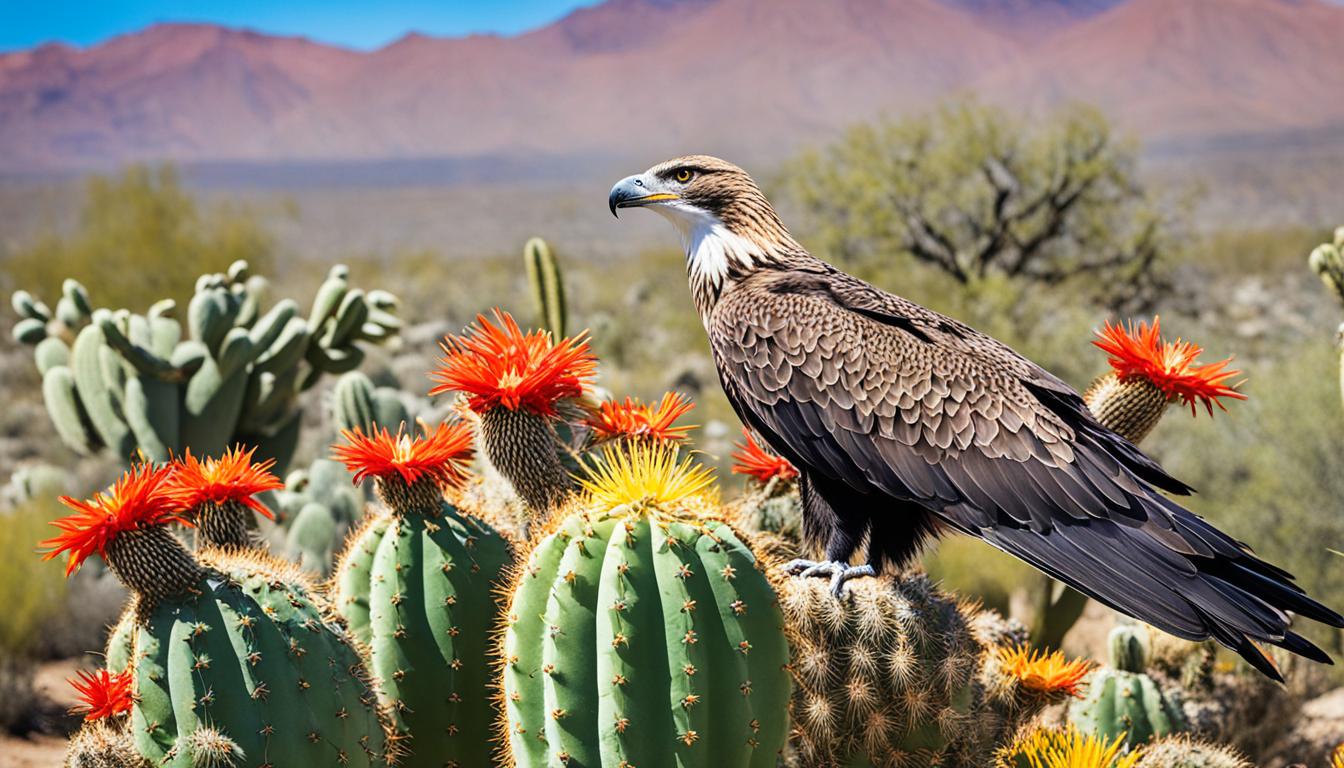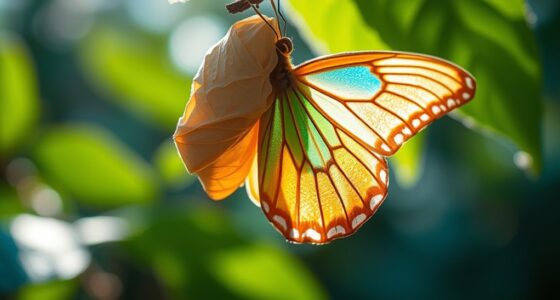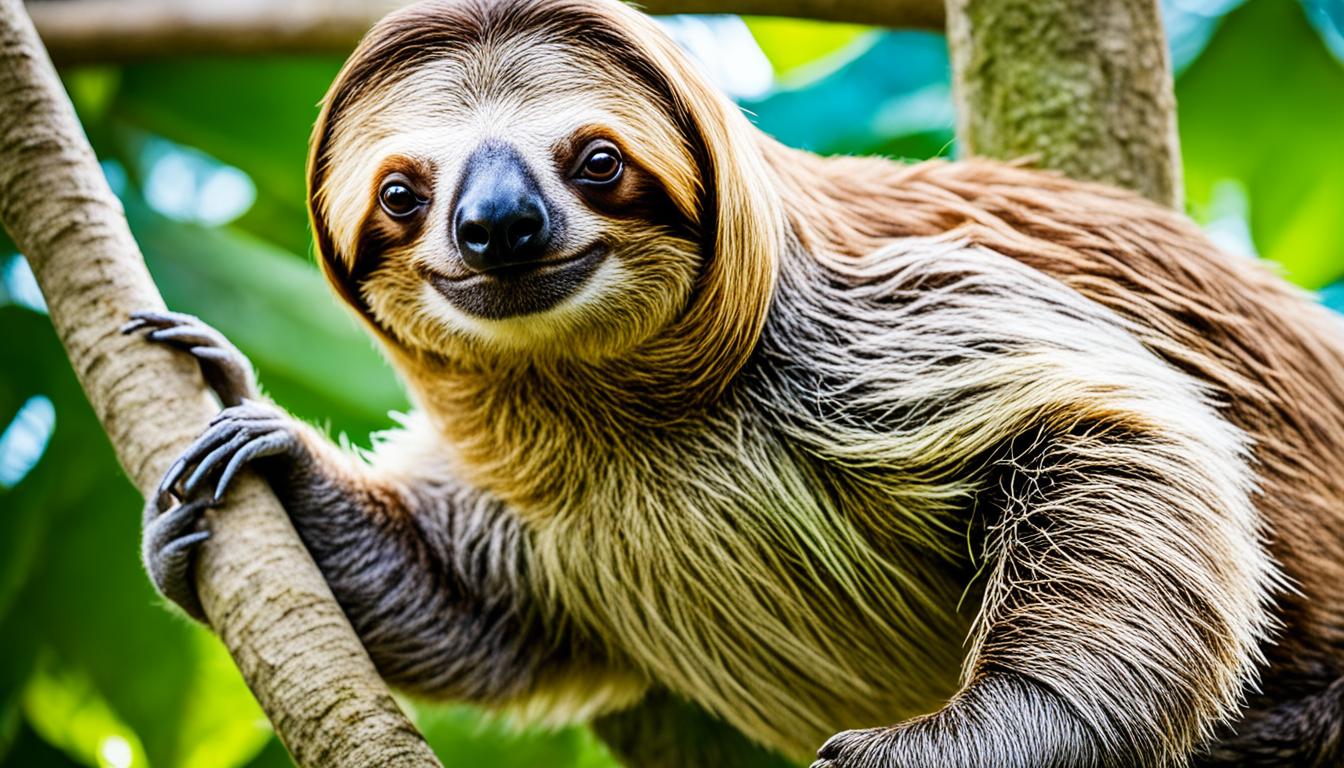Mexico boasts an impressive array of wildlife, with close to 1,000 bird species and 1,500 mammals, reptiles, and amphibians. The country’s varied landscapes, including deserts, forests, mountains, and wetlands, offer habitats for a plethora of creatures. Explore the rich biodiversity of Mexico and discover the diverse ecosystems that support such a wide range of animals. Dive into the fascinating world of Mexican wildlife and uncover the wonders that this biodiverse country has to offer!
Key Takeaways:
- Mexico is home to nearly 1,000 species of birds and 1,500 species of mammals, reptiles, and amphibians.
- The country’s diverse ecosystems support a wide variety of animal life.
- Mexico’s national parks offer opportunities to encounter exotic wildlife in their natural habitats.
- It’s important to be aware of the presence of dangerous predators and poisonous snakes in Mexico.
- Conservation efforts are crucial to protect Mexican wildlife and their habitats.
Mexican National Animals
When it comes to national pride, Mexico showcases its unique and diverse wildlife through its national animals. These cherished creatures represent the rich cultural heritage and natural beauty of the country. Let’s explore three of Mexico’s national animals – the golden eagle, the jaguar, and the Xoloitzcuintli.
The Golden Eagle
The golden eagle holds a special place in Mexican culture and is revered as both the official national animal and bird of Mexico. Its majestic presence is even depicted on the Mexican flag. This powerful bird symbolizes strength, freedom, and protection, embodying the spirit of the Mexican people.
The Jaguar
As the national mammal, the jaguar holds a significant position in Mexico’s biodiversity. Known for its grace, agility, and raw power, the jaguar is considered the king of the Mexican jungles. Its iconic rosette patterns and stealthy nature make it an awe-inspiring predator and a symbol of resilience.
The Xoloitzcuintli
The Xoloitzcuintli, often referred to as the national dog, has a rich historical and cultural background in Mexico. Revered by ancient Aztec civilizations, this hairless breed is considered a sacred animal. Xoloitzcuintlis symbolize loyalty, protection, and spiritual connection, and are treasured members of Mexican families.
Discover the beauty and significance of these national animals on your journey through Mexico, where you can witness their magnificence firsthand.
| Animal | Significance |
|---|---|
| Golden eagle | Official national animal and bird of Mexico, symbolizes strength and freedom |
| Jaguar | National mammal, represents power and resilience in Mexican jungles |
| Xoloitzcuintli | National dog, a sacred breed symbolizing loyalty and spiritual connection |
Dangerous Predators and Poisonous Animals in Mexico
While exploring Mexico’s diverse and fascinating wildlife, it’s important to be aware of the potential dangers posed by certain animals. The country is home to various dangerous predators and poisonous species that require caution and awareness. Among the notable predators in Mexico are jaguars and cougars, known for their powerful bites and ability to take down prey.
Additionally, Mexico hosts several venomous snakes that can pose a serious threat if encountered. The most common poisonous snakes in the country include rattlesnakes, fer-de-lance snakes, and yellow-bellied sea snakes. These snakes possess venom that can cause severe harm to humans.
When exploring Mexico’s natural areas, it is crucial to exercise caution and follow safety guidelines. Avoid disturbing or provoking these dangerous animals, and be mindful of their habitats and behavior. Respect the wildlife and observe from a safe distance to minimize any potential risks.
In the words of wildlife expert Dr. Maria Martinez, “Mexico’s diverse ecosystems harbor both incredible beauty and potential danger. Respect for these animals and their habitats is paramount to ensuring a safe and enjoyable wildlife experience.”
Dangerous Predators in Mexico
Among the dangerous predators found in Mexico, jaguars and cougars stand out due to their strength, agility, and hunting prowess. Here’s a closer look at these magnificent predators:
| Predator | Description |
|---|---|
| Jaguar | The jaguar is the largest cat species in the Americas and has a robust build, powerful jaws, and sharp claws. Known for its stealth and strength, the jaguar is a top predator in Mexico’s forests and can take down large prey, including deer and peccaries. |
| Cougar | Also known as the mountain lion or puma, the cougar is a highly adaptable big cat found in various habitats across Mexico. Cougars have muscular bodies, excellent jumping abilities, and a wide-ranging diet that includes ungulates, small mammals, and even livestock. |
Poisonous Snakes in Mexico
Mexico is home to several species of venomous snakes. These snakes possess potent venom that can cause serious harm or even death if bitten. Here are some of the most notable poisonous snakes in the country:
| Snake | Description |
|---|---|
| Rattlesnake | Rattlesnakes are known for the iconic rattle on their tails, which they use as a warning signal when feeling threatened. Their venomous bite can cause tissue damage and other severe symptoms without prompt medical attention. |
| Fer-de-lance Snake | The fer-de-lance, also known as the barba amarilla, is a highly venomous snake found throughout Mexico. Its bite can cause extensive tissue damage and life-threatening complications. It is considered one of the most dangerous snakes in the region. |
| Yellow-Bellied Sea Snake | Although rarely encountered, the yellow-bellied sea snake is one of the most venomous sea snakes in the world. Found in Mexico’s coastal waters, its venom can cause paralysis and respiratory failure if bitten. |
When encountering these dangerous predators or venomous snakes, it is crucial to avoid any attempts to handle or provoke them. Instead, appreciate them from a safe distance and respect their natural habitats.
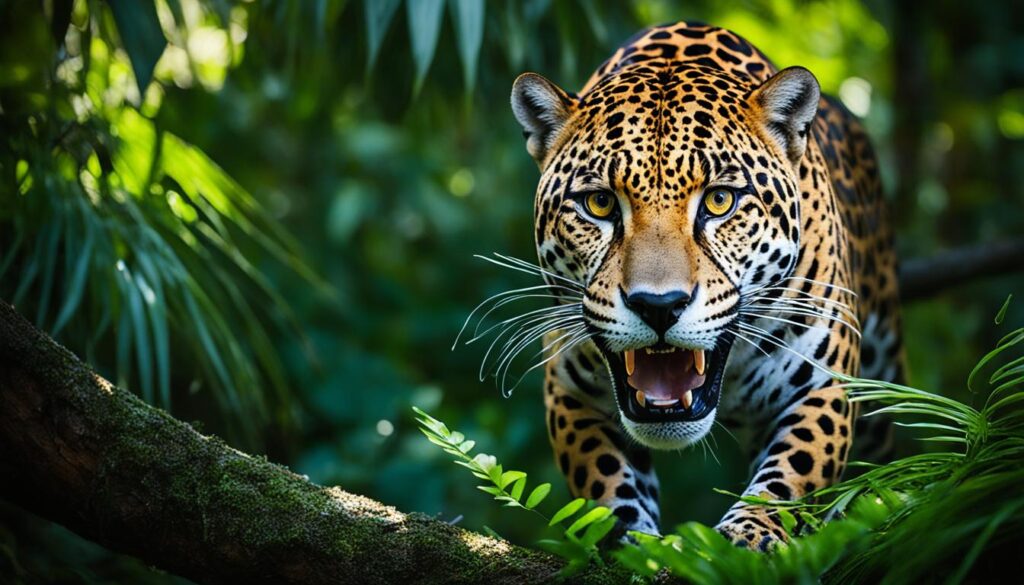
Exploring Mexico’s wildlife can offer incredibly rewarding experiences, but it’s important to prioritize safety and responsible interaction with these remarkable creatures. By understanding the dangers posed by certain animals and taking appropriate precautions, visitors can enjoy the beauty of Mexico’s wildlife while minimizing risks.
Threats to Mexican Wildlife
Mexico, like many countries, faces numerous threats to its wildlife. The rapid pace of urbanization, pollution, deforestation, and habitat loss have had significant impacts on native species, pushing many of them to the brink of extinction. It is imperative to address these threats to protect and preserve the unique biodiversity of Mexico.
Urbanization: The expanding urban areas in Mexico have encroached upon natural habitats, displacing wildlife and disrupting their ecosystems. The destruction of natural areas to make way for buildings, roads, and infrastructure fragments habitats and limits the available resources for many species. This leads to a decline in population and genetic diversity, ultimately increasing the risk of extinction.
Pollution: Industrialization and human activities have resulted in increased pollution levels, adversely impacting Mexican wildlife. Pollution from factories, vehicles, and agricultural practices contaminate the air, soil, and water, causing harm to plants and animals. The pollution levels in some lakes near Mexico City have become a grave threat to the survival of the Axolotl, a unique salamander species native to Mexico.
Deforestation: Mexico has seen significant deforestation, primarily driven by agricultural expansion, logging, and illegal poaching. The loss of forests and other natural habitats has disrupted ecosystems and deprived numerous species of their homes and food sources. Deforestation has consequences for both terrestrial and aquatic wildlife, unraveling intricate ecological relationships and putting many species at risk.
Extinction: The combined impact of urbanization, pollution, and deforestation has pushed several Mexican species to the brink of extinction. The critically endangered Vaquita, a small porpoise found in the Gulf of California, is on the verge of extinction due to accidental entanglement in fishing nets. Similarly, the Mexican Howler monkey, known for its distinctive howling sound, faces habitat loss and human activities that threaten its survival.
Threats to Mexican Wildlife Overview
| Threats | Examples |
|---|---|
| Urbanization | Loss of natural habitats due to urban expansion |
| Pollution | Air, water, and soil pollution from industrialization and human activities |
| Deforestation | Logging, agricultural expansion, and illegal poaching causing habitat loss |
| Extinction | Critically endangered species like the Vaquita and Mexican Howler monkey |
It is crucial to raise awareness about these threats and take immediate action to mitigate their impact on Mexican wildlife. Conservation efforts, including habitat preservation, stricter regulations, and community engagement, are key to protecting the vulnerable species and their ecosystems. By addressing these threats and promoting sustainable practices, we can secure a future where Mexican wildlife continues to thrive.

Unique Mexican Animals at Risk
Several Mexican animals are at risk of extinction. It is crucial to highlight the challenges they face and the urgent need for conservation efforts to protect these unique species.
Axolotl
The Axolotl, also known as the Mexican walking fish, is a species of salamander that is endemic to Mexico. It is known for its incredible ability to regenerate lost body parts. However, urbanization and water pollution have severely impacted its habitat, pushing it closer to extinction.
Vaquita
The Vaquita is the world’s smallest cetacean, found exclusively in Mexico’s Gulf of California. With a population of fewer than 10 individuals, it is critically endangered. The vaquita faces the threat of accidental entanglement in fishing nets, which has led to a significant decline in its numbers.
Mexican Howler Monkey
The Mexican Howler monkey, a subspecies of the mantled howler, inhabits the tropical rainforests of Mexico. Known for its distinctive howling sound, it is critically endangered due to habitat loss and fragmentation caused by deforestation and human activities.
Mexican Wolf
The Mexican Wolf is a distinct subspecies of the gray wolf and is native to northern Mexico. With a limited range and population, it is listed as endangered. Conservation efforts are vital to protect this iconic Mexican predator from further decline.
These unique Mexican animals are irreplaceable parts of Mexico’s biodiversity. It is crucial to raise awareness, support conservation initiatives, and take action to ensure their survival for future generations.

Conservation efforts are crucial to save these unique animals from extinction.
Marine Life in Mexico
Mexico is renowned for its thriving marine ecosystems and diverse marine life. Along its coastlines, visitors can explore vibrant coral reefs, encounter beautiful sea turtles, and witness the grace of dolphins.

The Gama Reef: A Marine Wonderland
One of Mexico’s standout attractions is the Gama Reef, located off the Yucatán Peninsula. This mesmerizing underwater wonderland is the second-largest coral reef system in the world, boasting an array of breathtaking marine species.
Within the Gama Reef, you’ll discover striking black coral formations swaying gently in the currents. These delicate yet resilient corals provide habitats for numerous marine creatures, creating a rich and diverse underwater ecosystem.
Sea Turtles: Majestic Ocean Wanderers
Mexico is home to four out of the seven species of sea turtles found worldwide. Along the shores of the Yucatan Peninsula, you can witness the nesting rituals of magnificent loggerhead and green sea turtles. These ancient creatures return to the same beaches where they were born, ensuring the continuation of their species for generations to come.
Dolphins: Intelligent and Playful
No marine encounter in Mexico is complete without a glimpse of its resident dolphins. Known for their intelligence and playful nature, dolphins captivate visitors with their acrobatic displays and graceful movements. Watch as they effortlessly glide through the crystal-clear waters, leaving a trail of wonder in their wake.
Conservation Efforts and Protection
Mexico recognizes the importance of preserving its marine ecosystems and the fascinating creatures that call them home. The country has implemented protective measures, including bans on whaling and the establishment of marine protected areas. These initiatives ensure the long-term sustainability and conservation of Mexican marine life.
A Glimpse into Mexico’s Marine World
Exploring the marine life in Mexico offers an extraordinary opportunity to witness the wonders that lie beneath the turquoise waters. From the enchanting coral reefs to the gentle sea turtles and the playful dolphins, Mexico’s marine ecosystems are a treasure trove of beauty and biodiversity.
| Marine Species | Characteristics |
|---|---|
| Black Coral | Delicate formations providing habitats for marine creatures. |
| Sea Turtles | Majestic creatures nesting along the Yucatan Peninsula. |
| Dolphins | Intelligent and playful marine mammals delighting visitors. |
Immerse yourself in the wonders of Mexican marine life and create unforgettable memories as you witness the beauty that lies beneath the surface.
Wildlife in Mexican Jungle
The Mexican jungle is a treasure trove of diverse and captivating wildlife. Exploring this lush ecosystem allows visitors to catch a glimpse of extraordinary creatures in their natural habitat. From magnificent crocodiles to charismatic monkeys, the Mexican jungle offers a captivating experience for nature enthusiasts.
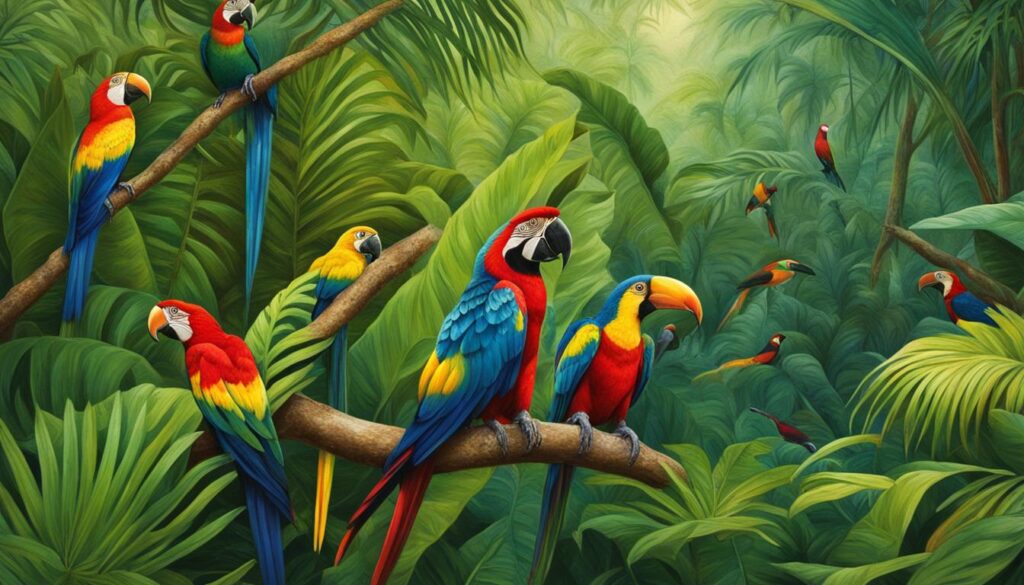
Crocodiles in Mexican Waterways
The Mexican jungle is home to various species of crocodiles, including the Morelet’s crocodile and American crocodile. These mighty reptiles can be found majestically gliding through the region’s waterways, basking in the warm sunlight. As apex predators, they play a crucial role in maintaining the balance of the jungle ecosystem.
Howler Monkeys: Masters of the Treetops
High up in the jungle’s canopy, the distinctive calls of howler monkeys reverberate through the air. Species like the Yucatan black howler and Yucatan spider monkey inhabit the treetops. With their agile movements and incredible acrobatics, they navigate the dense foliage, showcasing their unique adaptations and captivating behavior.
A Diverse Array of Wildlife
The Mexican jungle is not just home to crocodiles and monkeys. It teems with an array of fascinating animals, showcasing the remarkable biodiversity of the region. The Yucatan squirrel, Central American agouti, and white-nosed coati are just a few of the many captivating creatures that can be encountered in this verdant habitat.
Whether observing the stealthy movements of a crocodile, listening to the booming calls of howler monkeys, or marveling at the grace of other jungle dwellers, exploring this wild, untamed environment is an opportunity to witness the wonders of Mexican jungle wildlife up close.
Encounters with Mexican Wildlife in Quintana Roo
Quintana Roo, located in the Mexican Caribbean, offers incredible opportunities to encounter Mexican wildlife. The region is teeming with diverse species, including crocodiles, bats, howler monkeys, and spider monkeys. Exploring Quintana Roo’s natural wonders provides an immersive experience to witness these fascinating animals up close in their natural habitats.
Observing Crocodiles in the Sian Ka’an Biosphere Reserve
One of the highlights in Quintana Roo is the chance to observe crocodiles in the Sian Ka’an Biosphere Reserve. This protected area is home to a thriving population of crocodiles, including the Morelet’s crocodile and American crocodile. Visitors can embark on guided boat tours through the reserve’s waterways, offering a unique opportunity to witness these ancient reptiles in their natural environment.
Wondrous Bat Colonies at Dusk
At dusk, witness the enchanting sight of bat colonies emerging from their caves in Quintana Roo. Numerous species of bats call this region home, and observing their nightly exodus is a memorable experience. As the sun sets, watch as thousands of bats take to the sky, creating an awe-inspiring spectacle as they go about their nocturnal activities.
Spotting Howler Monkeys and Spider Monkeys
The lush forests of Quintana Roo are inhabited by charismatic primate species, including howler monkeys and spider monkeys. Howler monkeys, such as the Yucatan black howler, are known for their impressive vocal abilities and distinctive roar-like calls that can be heard echoing through the trees. Spider monkeys, like the Yucatan spider monkey, are agile creatures that swing from branch to branch with incredible grace. Keep a keen eye and ear out for these skilled climbers as you explore the verdant landscapes of Quintana Roo.
By joining an eco-tour with a knowledgeable guide, such as Mexico Kan Tours, visitors can learn more about these incredible animals, their behaviors, and the conservation efforts in place to protect them. Enhance your wildlife encounters in Quintana Roo by embarking on an adventure tailored to immersing yourself in the beauty and diversity of Mexican wildlife.
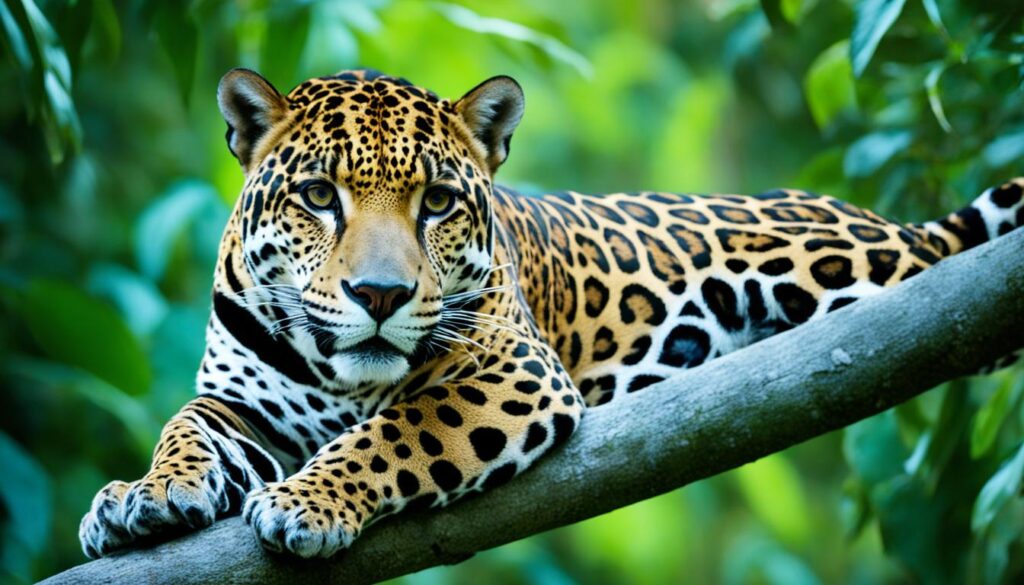
| Species | Features |
|---|---|
| Crocodiles | Powerful reptiles, inhabiting waterways |
| Bats | Nocturnal mammals, emerging from caves at dusk |
| Howler Monkeys | Distinctive vocal abilities, remarkable roars |
| Spider Monkeys | Agile climbers, swinging through the treetops |
Mexican Animals in Urban Areas
Even in urban areas of Mexico, various animal species can be found adapting to their surroundings. Squirrels, such as the Yucatan squirrel, can be seen in parks and even in residential areas. Coatis, also known as coatimundis, often venture into cities in search of food. Iguanas are another common sight, found in hotel gardens, public parks, and archaeological zones. These animals have learned to coexist with human habitats, making for interesting encounters with urban wildlife.

Urban areas of Mexico may seem unlikely places for wildlife sightings, but these resilient creatures have managed to adapt to urban environments. Squirrels, coatis, and iguanas are among the fascinating animals that can be spotted amidst the bustling cityscapes. Let’s explore these unique urban sightings:
Squirrels
Squirrels, including the Yucatan squirrel, can be found scampering about in parks, gardens, and even residential neighborhoods. These agile and playful animals are known for their acrobatic skills as they leap from branch to branch in search of food.
Coatis
Also known as coatimundis, coatis have a knack for exploring urban areas in Mexico. These curious animals, resembling a cross between a raccoon and a monkey, are often seen roaming city streets or rummaging through garbage bins in search of food.
Iguanas
Iguanas are a common sight in Mexican urban areas, often found basking in the sun or lounging in public parks and gardens. These reptiles with their distinctive scales and colorful demeanor have adapted well to urban environments, cohabiting with humans as they go about their daily activities.
Encountering these unique Mexican animals in urban areas provides a valuable opportunity to appreciate the adaptability and resilience of wildlife amidst human-dominated landscapes. It’s a reminder of the interconnectedness between nature and urban spaces, showcasing the ability of different species to thrive even in seemingly unlikely habitats.
“The presence of squirrels, coatis, and iguanas in urban areas of Mexico highlights the remarkable adaptability of these animals and their ability to coexist with human habitats.”
While these urban encounters may bring joy and wonder, it’s important to remember that wildlife should be respected from a distance and not disturbed or fed. By appreciating and protecting the natural habitats of these animals, we can ensure their continued presence in our cities and inspire future generations to value the importance of coexistence between humans and wildlife.
| Animal | Habitat | Distinctive Features |
|---|---|---|
| Squirrels | Parks, residential areas | Agile, acrobatic, bushy tail |
| Coatis | Cities, garbage bins | Raccoon-like appearance, long snout |
| Iguanas | Public parks, hotel gardens | Scales, colorful, basking behavior |
Noteworthy Birds of Mexico
Mexico is a birdwatcher’s paradise, offering a wide array of avian species. The country’s diverse ecosystems provide habitats for numerous bird species, making it a must-visit destination for bird enthusiasts.
“Mexico is one of the top birding destinations in the world, with over 1,000 species of birds recorded within its borders. The combination of its geographical location, diverse habitats, and migration routes makes it a haven for birdwatching enthusiasts.”
– Birdwatching Magazine
Among the noteworthy birds of Mexico are the roseate spoonbill and the turquoise-browed motmot.
| Species | Description | Habitat |
|---|---|---|
| Roseate Spoonbill | The roseate spoonbill is a striking bird with its pink plumage and distinctive spoon-shaped bill. It stands out in estuaries and coastal lagoons along the Yucatan Peninsula. | Estuaries, coastal lagoons |
| Turquoise-Browed Motmot | The turquoise-browed motmot is known for its multicolored plumage and pendulum-like tail. Its vibrant presence can be observed around cenotes and freshwater lagoons. | Cenotes, freshwater lagoons |
These birds add to the rich tapestry of Mexico’s birdlife, showcasing the country’s commitment to biodiversity conservation and providing memorable sightings for nature enthusiasts.
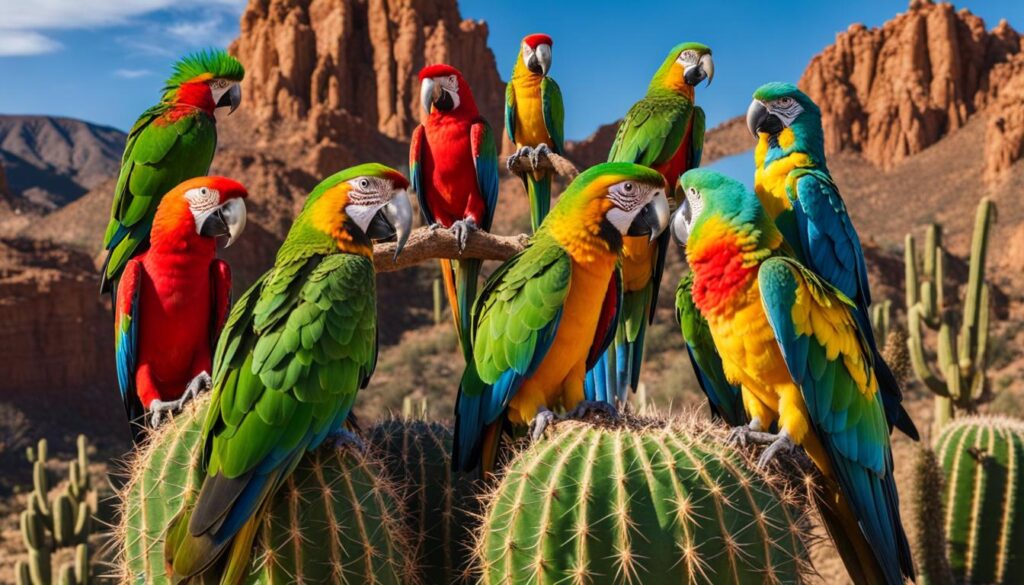
Conclusion
Mexico is a haven for wildlife enthusiasts, with its abundant Mexican animals and diverse ecosystems. Whether exploring the jungles of Quintana Roo, witnessing the marine wonders of its coastlines, or observing urban wildlife, encountering Mexico’s unique creatures in their natural habitats is an unforgettable experience.
However, it is vital to remain conscious of the conservation efforts and challenges facing Mexican wildlife. Biodiversity preservation is crucial to safeguard the country’s rich natural heritage. By supporting conservation initiatives and practicing responsible tourism, visitors can play a role in protecting Mexico’s precious wildlife and their habitats.
Conservation efforts are essential to combat threats such as urbanization, pollution, and deforestation, which have contributed to the endangered status of many Mexican species. It is imperative to prioritize the preservation of vulnerable animals like the Axolotl, Vaquita, Mexican Howler monkey, and Mexican Wolf, as their existence enriches Mexico’s biodiversity.
Embracing sustainable travel practices and taking part in wildlife encounters that prioritize the well-being of the animals and their habitats is key. By doing so, visitors can help ensure that future generations can continue to marvel at the remarkable Mexican animals that inhabit this captivating country.
